Erica, blooming in the garden, will not leave any lover of flowers indifferent. The luxurious spectrum of the paints of evergreen bushes along with unpretentious care - the main advantages of many years of decorative culture.
How to choose and put seedlings? How to care for Erica on the flowerbed and at home? What you need to know that the heather beauty pleased the beauty for many years? All answers, as well as tips and recommendations of experienced flower products, in this selection of material.
Erica Plant, Botanical Description
- Erica refers to the big kind of ancient evergreen plants from the Mereskov family.
- The wide range of natural distribution of the genus from South Africa to the highlands of the Caucasus is presented more than 800 types of shrubs, trees and semi-stabilics. Numerous species of Ericca differ among themselves not only by appearance, but also by the requirements for the growing environment.
- Unusual, but very elegant the name of the flower is associated with the Greek word "Ereike", which means "breaking". Most likely, there is a relationship with brilliance of this coniferous plant.
- Most of the representatives of the genus Eric are represented by low-spirited shrubs, from 20 cm high to 2 m.
- Many species of Eric are typical decorative plants for the garden, although there are miniature forms recognized by purely indoor plants.
- Externally, Eric is very similar to the heather ordinary, but is distinguished by brighter and lush flowering.
- Overhead shoots of evergreen shrubs (and trees) are covered with gray or brown bark. Stems are thin, tough and reprehension.
- Narrow needle or linear leaves of many years of culture are located in the mutters or alternately. Length of the sheet plate can vary from 2 to 15 mm. The structure of Erica's leaves has its own characteristics: their edges are bent down, and from the bottom side there is a hollow with the styers.
- Eric's bloom comes in different ways (depending on the species), starting with the spring and ending in winter. It should be noted yet that most of the representatives of the family of Eric are distinguished by a late period of flowering. This feature of flowers allowed many years of culture to take the honorable place from many landscape designers and interior designs.
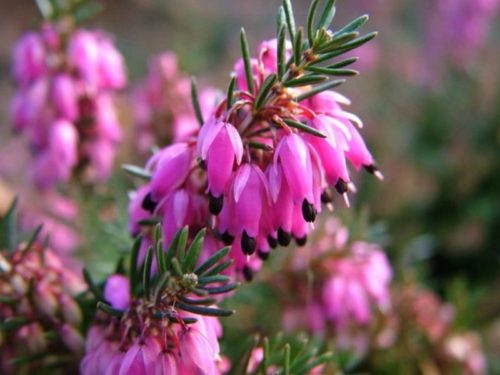
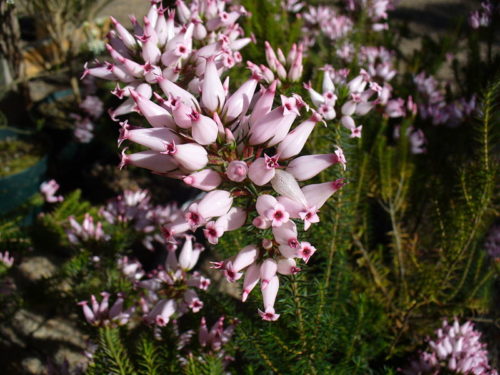
- The bell talid flowers of Erika are characterized by an elongated form and dimensions of about 1-3 cm. The color of the inflorescences is very diverse: from white to red, purple and ink.
- Flooded dry inflorescences for a long time remain on the shoots, providing a plating the effect of continuous flowering.
- The fruit has a form of a tetrahedral box with a variety of small seeds.
- Erica is a durable plant capable of growing in one place from 15 to 20 years.
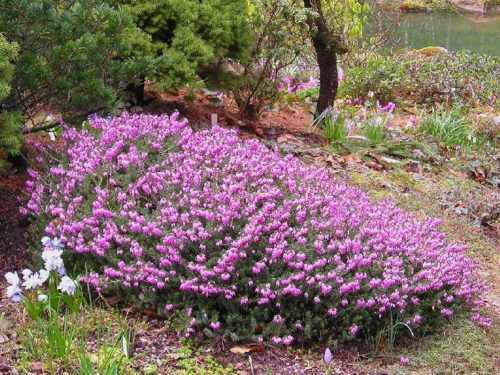
Erica Plant, Scope of Use
- Eurrician evericheld plants are widely used in decorative gardening and landscape design. Flowers are originally and spectacular on the background of recreation with stones, at the flower beds, household plots and urban squares. Zimnetswearing Types of Erika look pretty unusually against the background of a winter dull landscape, especially since other plants in the garden are not capable of such competition at this time of year.
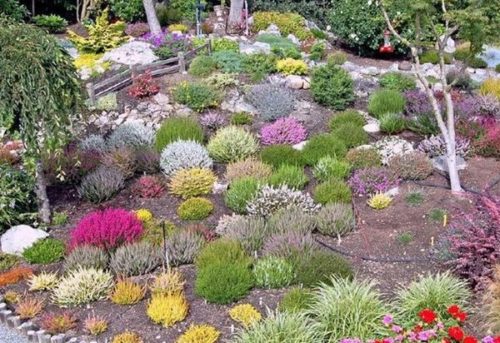
- The Erica plant is recognized as a real ancient relic growing in an ancient ecosystem from past geological eras. In connection with such a rich "past", the plant is studied in detail in a number of biological universities.
- Some species of Eric are used in medicine as medicinal herbs for the treatment of diseases of the joints (gout).
- Among the huge species diversity there is a variety of medical forms of the plant, thanks to which the beekens are obtained by the so-called. "Heath Honey".
- From the porous wood of the roots of the tree-like Erica, there are smoking tubes, more famous called "Heath".
- Also cultivated species that are perfectly suitable for cutting or making dry bouquets.
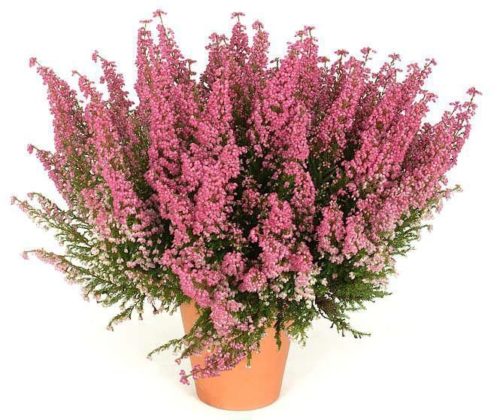
Garden Eric, species diversity
Given the huge species diversity of Erica, consider the features of the most common forms of evergreen decorative plants in our region.
- Eric herbal.
Eric herbal or, as it is also called, ruddy, is an empty evergreen shrub, no more than half a meter height. The thick crown often resembles a "live green carpet." The view is winter-hardy, hardy, has more than 200 s grades. May be cultivated in the middle lane of Russia. In the soft southern climate, bloom comes in winter, in the more severe regions - in spring or summer. Pink or crimson petals. The culture perfectly transfers lime soil.
- Eric four-dimensional.
Erica four-dimensional or solecolis has a compact shrub shape. The view is winter-hardy, highly decorative. The color of felt leaves is gray-green, flowers - white, pink or red. The leaves are assembled in a muve of 4 pcs., Which caused the name of the species. Winter hardiness moderate, in zones 4-5 needed additional shelter for the winter.
- Eric Darleyskaya.
Hybrid view with a long flowering period and abundance of buds. Eric Darlejskaya is distinguished by the average level of frost resistance and rapid growth rates. In the height, the perennial can reach the meter marker, in diameter - to half a meter. Crown is dense, spherical. Flowers painted in white, pink or crimson tones. The plant grows well on lime soil.
- Erica tree.
This is a straight unpretentious tree with a curved barrel can grow on the rocky and dry ground. White spike bell flowers with bright brown anthers. The plant is characterized by a strong fragrant aroma. The height of the wood plant can reach 7 meters.
- Erica Cossel.
Erica Coshable - low (about 25 cm). The color of the inflorescence is gentle pink. Blossom starts in the summer.
- Eric Gray.
Eric Gray (or ash) is distinguished by an empty crown of a low shrub reaching a height from 20 to 50 cm. The type of type is due to the lysistered color of the foliage. Flowers pinkish-whitish. During the period of harsh winters requires shelter.
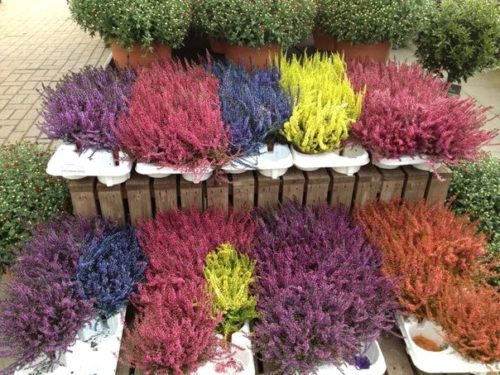
Erica, indoor plant
- Eric's flower can be grown in pots, as a houseplant. Naturally, with a huge variety of species of Erica, not everyone is suitable for cultivation at home.
- For domestic flower growing, the type of Erika graceful and Erica herbal (ruddy), as well as varieties derived from these forms of Erika, are most often used.
- Erica herbal can grow in diameter to half a meter, characterized by bright green leaves and flowers of pink color. Erica is elegant similar to his relative, differing only by color of the inflorescence. They have purple-lilac shades.
- Room Erica is a low-spirited tight shrub, no more than 40-50 cm high. The diameter, on the contrary, often exceeds the height of the perennial. A constantly growing bush needs periodic transplantation into large containers in size or in systematic separation of shrub. Eric's bloom at home comes in autumn or in winter, glading surrounding the abundance of gentle bells until spring.
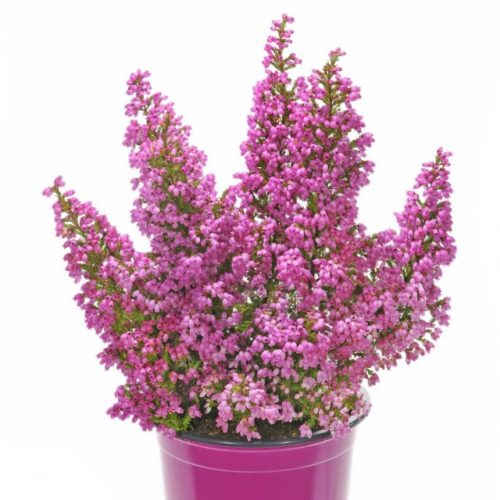
Erika Plant, Growing Features
- Most of the types of Erica (with the exception of forms that can grow on wetlands) need good water and breathable soil. The culture is badly tolerant of moisture, so when planting a plant (both in the garden and in a pot), it is important to build a good drainage layer.
- Eric is positively responding to a lightweight loan soil. The best for landing is considered to be hit from peat, sand and turf (3: 1: 1). For the types of Eric, preferring the neutral soil environment, you need to reduce the amount of peat mixture.
- Young plants are planted most often in early spring, to the flowering process. Practiced also landing and after the cessation of flowering. If the transplant is carried out from the container, the summer period is also suitable. In this case, the pot is poured in advance with water and settle down after 1-2 hours, while maintaining the natural self (from the pot).
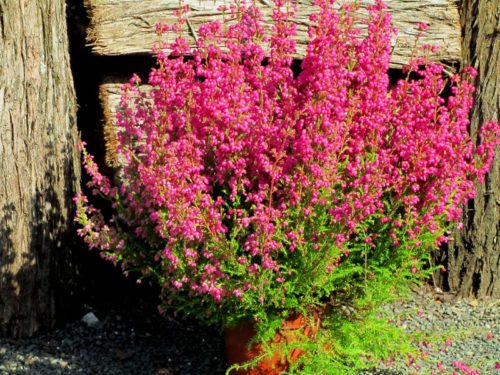
Erica, planting plants in the garden
- Numerous representatives of Erica clan can grow on various types of soils: one on sour, others - on limestones. The soil can be both dry sand and wet, wetlands. Therefore, before planting it is important to familiarize yourself with the preferences of this or that type of Eric. Most Eric's varieties are still growing on neutral or acidic, drained, soil.
- Evergreen culture negatively "refers" to organic fertilizers, therefore it is not worth over with the Organic "overdo it."
- The landing place should be selected open, with scattered light. Shadow and half supersaturane, as such conditions provoke the fading painting of perennial flowers and significantly reduce their abundance. Strengthening fragile branches of Erika need a plot protected from winds and drafts. Living fence from representatives of coniferous (or other plants) will be a reliable protection for a decorative shrub in the garden.
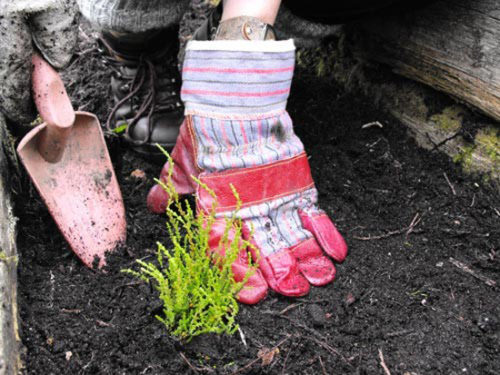
- To avoid constant stagnation of moisture, it is better not to disembark a perennial in shorts or hollows. The convergence provokes the development of fungal diseases.
- The initial stage of planting culture will be the preparation of landing pit. The depth of the pit must correspond to the sizes of the root system of Eric's seedling. As a rule, 20-25 cm will be enough.
- At the bottom of the pit, the drainage layer of rubble or broken bricks is built, the soil sweat is sweep on top. The root neck of the plant during landing should be at the level of the earth's surface, without releasing.
- When landing several Eric's shrubs, there are about half a meter between them.
Erica, planting a houseplant
- Growing a home plant, Ericca, requires compliance with a certain temperature regime. The optimal cultivation temperature of the bush at home should not exceed the mark of 18 0C, and during the flowering period - to be even lower (up to 8 0WITH). In the case of a temperature exceeding the indicators, the plant must necessarily increase the humidity of the air. To do this, the crown is sprayed from the sprayer, install a special moisturizer or put a pot with a flower to wet clay.
- When planting a plant in a pot, you must first ensure that there are several holes on the bottom of the planting container (for water drain), then pour the drainage layer of fine rubble or clamzit, and then fall asleep the main soil.
- The place where the room plant is plants, should be well lit, without drafts.
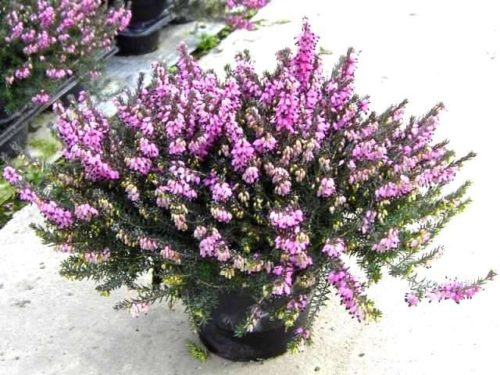
Where to buy and how to choose an Erica plant?
- By purchasing a coniferous plant, it is important to verify the identity of the selected variety, check the stability of the plant to local climatic conditions. As you know, the zoned varieties are well adapted to the local climate, which you will not say about imported from afar or imported seedlings.
- When buying seedlings, you should pay attention to the state of the root system of the representative of heather. Considering that Eric's roots form close symbiosis with soil mushrooms, damaged (bare) roots will be bad in a new place.
- Eric, sold in a container, must also answer a number of requirements, namely: shoots should be completely designed and elastic; At the ends of the branches, young (light color) shoots will be noticeable; The soil in the container is moistened (without cutting and stagnation of moisture); The root com container is not separated from the pot (this may indicate the drying of the soil and roots).
- The best age seedling for landing permanent place is 2-3 years.
Erica Plant, Care Features
How to properly care for Eric's flower? In fact, there are no special secrets. Watering, mulching, light forming trimming and annual feeding - these are the main activities necessary for the care of Erica's plant at home and in the garden, in the open soil.
In addition, garden Eric often needs shelter for winter, weeding from weeds and protection against characteristic of the disease.
Room Erica, mostly needs good lighting and cool air.
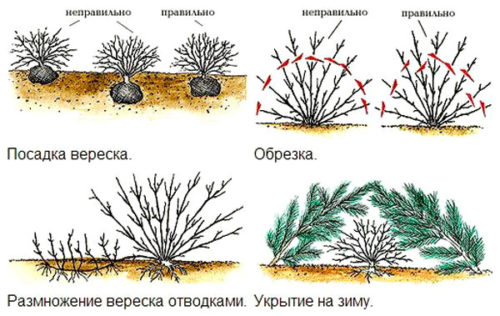
Watering and loosening Erica plants
- The coniferous plant of Eric gives preference to watering with soft water (without any impurities).
- In the hot and postposcamer period, the shrub is needed more often and rich. At the same time, it is impossible to allow excessive convergence or moisture stagnation.
- Eric's indoor plant with a stolen soil can be "reanimated". For this, the pot with a bush of Erika is recommended to put in the container (for example, a bucket) with water, about an hour.
- The spraying of the above-ground part of the perennial is positively affecting the growth and development of the shrub, while providing a high level of humidity with the necessary flower. Conduct spraying better in the evening.
- Given the surface running of the roots of Erica, the soil loosening is carried out carefully and not deep. The loosening is shown when weed removal and in the case of soil sealing.
- Mulching of the rolling circle of wood chips, peat or bark will avoid additional loosening, while ensuring the humid soil microclimate.
Trimming Erica Plants
- In the first two or three years after landing, the plant is not cut off. Upon expiration of this period (and sometimes much later), a shallow forming trimming of the shrub is carried out.
- Crop the crown of the bush after the completion of flowering or to it. Do it neatly, slightly lower inflorescences, without cutting the old weighing part of the shoots.
- To preserve a decorative view of room Erica, after flowering a pot with a flower slightly tip and shakes faded buds.
- Pruning attractive and well-groomed appearance. In addition, the removal of old shoots stimulates the formation of new, young.
- Regular annual trimming allows the plant to lay a larger number of floral kidney, which ensures further formation of a beautiful, abundant blooming, crowns.
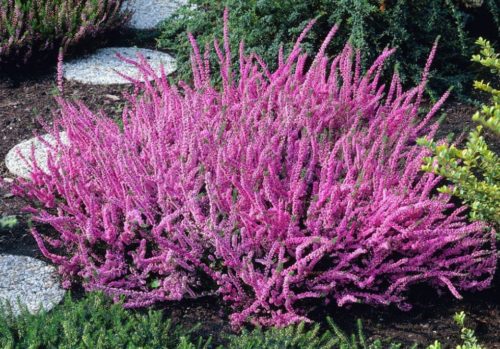
Forming Plants Erica
- The frequency of making feeding for plants Eric is 1 time per year (spring).
- It is undesirable to use organic fertilizers as feeding Erika.
- The optimal option is an introduction to the soil of complex mineral fertilizers (for example, 30 g of Kemira Universal complex for 1 m 2).
- Ready fertilizers for rhododendrons or azaleas are also suitable, which are sold in flower and horticultural stores.
- When watering the flower with a fertilizer with a solution, it is necessary to ensure that the liquid does not fall on the deciduous part of the shrub.
Diseases and pests of Erica plants
- Eric plants are practically not attacked by pests, but, unfortunately, may be hurting fungal and viral diseases.
- Most often the disease is gray rot. Provocates the appearance of fungus Increased humidity of soil and air (for example, stagnation of melting waters or late opening of the shrub in spring). One of the first signs of the disease will be a gray raid on the shoots and the extinguishing of the leaves. To prevent disease, antifungal drugs are used, according to the type "Fundazol" or "Topaz". At a deeper stage of the disease, a 1% solution of copper sulfate is used, which spray the plant several times (with an interval of 6-10 days). For the prevention of the disease, Eric's bushes are treated with a solution of copper sulfur early spring and late autumn.
- The overalling of the soil and the oversupply of fertilizers made also negatively affect the growth and development of evergreen shrub. At the same time, green leaves acquire a brownish tint, and the tops of the shoots are withering.
- Slowing out young shoots and a grayish-whitish raid on the leaves of Erika testifies to the damage to the plant with mildew. Brown spots on the foliage of perennials indicate the progression of the disease - rust. In the fight against these diseases, appropriate antifungal drugs are used.
- In the event of a plant lesion with viral infection, Eric's shoots begin to be curved and deformed, and foliage and inflorescences become unevenly painted. As a rule, with such a disease, the shrub has to be destroyed, and its place of growth is to carefully disinfect.
Eric Plant Shelter
- Most of the representatives of heers, including Eric, are distinguished by a high degree of frost resistance, which means they do not require any additional shelter for the winter.
- In the regions with cold harsh winters, the born area of \u200b\u200bthe shrub is mulched with a thick (up to 10 cm) layer of peat or dry leaves. The above-ground part of the perennial is covered with a spruce noodle.
- In the spring, upon the occurrence of stable warm weather, the shelter is removed, and the mulch is slightly separated from the barrel.
Erik Plant Splitting
Perennial Eric multiplies with seeds, cuttings, tanks or dividing bush.
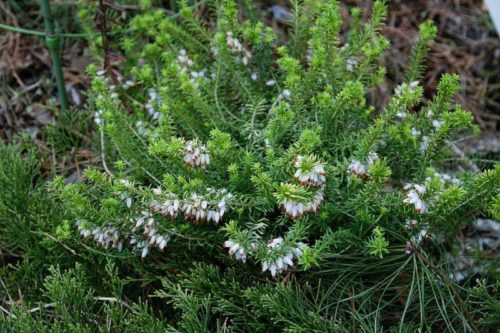
Generative method (seeds) of the reproduction of Eric
This method of reproduction is most often used when moving new varieties of Erica. The breeding of Erica with the help of seeds and at home, although the time for growing seedlings will need more than with a vegetative method.
- Eric's seeds are very small, so the surface seeding is used for them, they can also be seen in bags (or a row), not closeing in the ground. The substrate uses coniferous land, peat and sand (1: 2: 1). The plates are covered with glass, imitating the greenhouse conditions.
- Supporting temperature regime about 20 0C, providing soil moisturizing and ventilating the greenhouse, after about a month, plant shoots appear.
- Seedlings provide light and humidity, they are frowning and hardened, and only after 1.5-2 years they will be ready for landing at a permanent place.
- Seeds of Erica, under the conditions of proper storage, for a long time (up to 15 years) are able to keep germination.
Vegetative method (cuttings, part of the bush, gaze) reproduction of Erika
- For reproduction with cuttings, early spring (or after a flowering period), short semi-respene top erica shoots, about 2-3 cm long, a third cuttings are deepened into the substrate from peat and sand. Good results of rooting cuttings shows the use of additional feeding (microfertilitation or weak urea solution). After about a month, the cuttings form roots. From this time, the cuttings grow rapidly and landed at a permanent place.
- The division of the shrub on the part is perhaps the easiest way to breed the evergreen heather. For this, the bush, with the help of shovels, shall be divided into parts with full roots, after which they are seeding them to a new place.
- Shrub gangs (lower shoots) cheer in the spring, pinch the bracket and wait for the formation of roots. Naturally, during this period, the plant and the place of fixation of the tanks need regular irrigation. The rooted tanks are separated from the maternal bush and planted separately.
So, a surprisingly attractive plant, Eric, most often used in garden flower growing, but some of its species can be grown at home, in flower pots. It is important to take into account the features of the cultivation of evergreen shrubs and its basic needs: light, moisture, fresh air.
Knowing key agricultural techniques, planting and care of Erica will not cause special difficulties. In return, flower bed, a flower pot or garden will truly transform and "will play with multi-colored paints, even in the cold season.

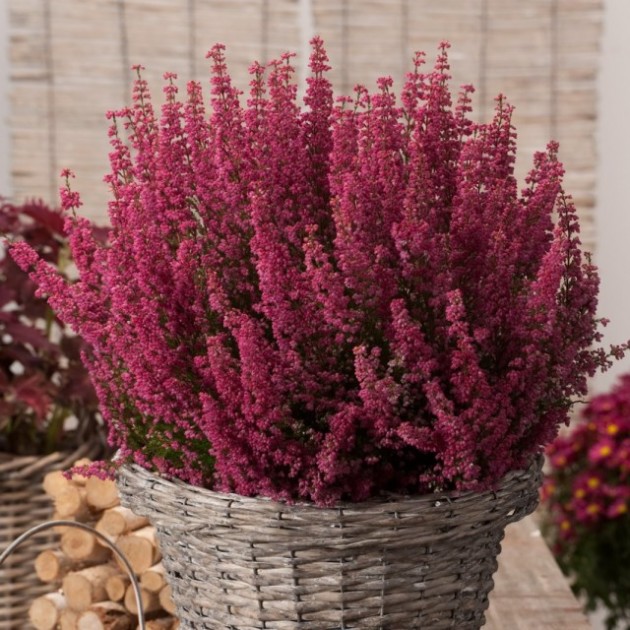
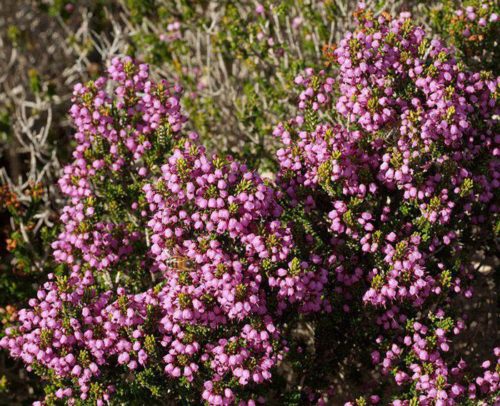

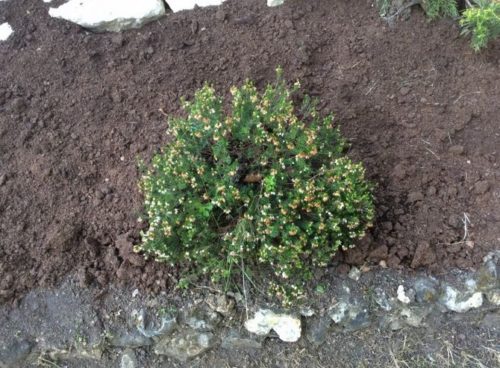
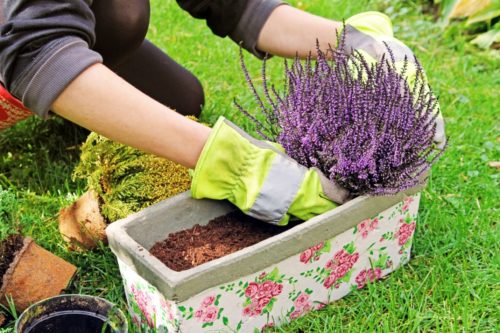
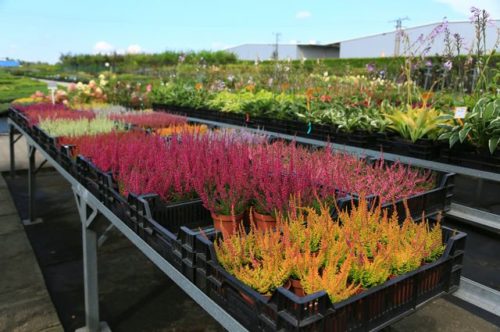
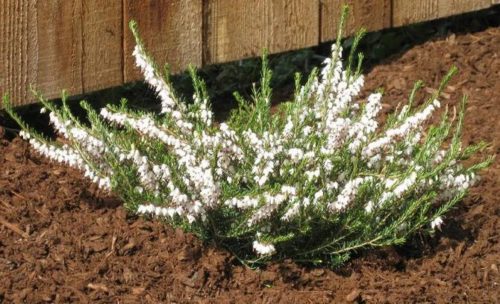
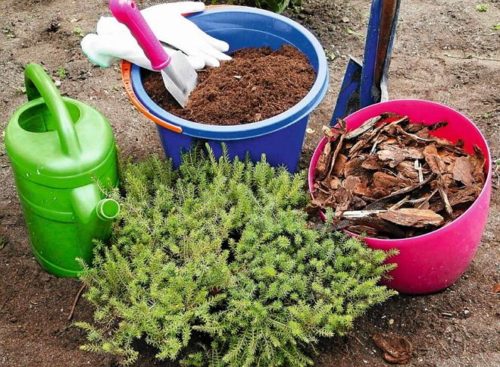
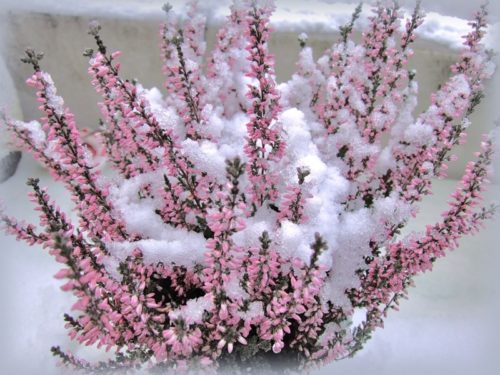


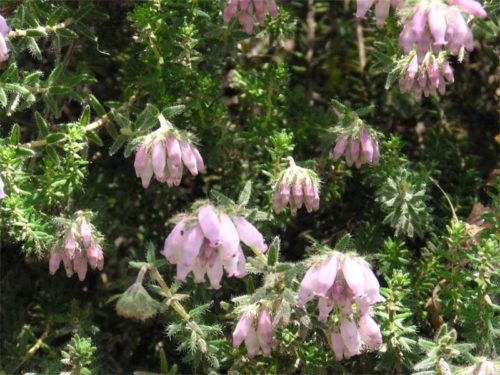
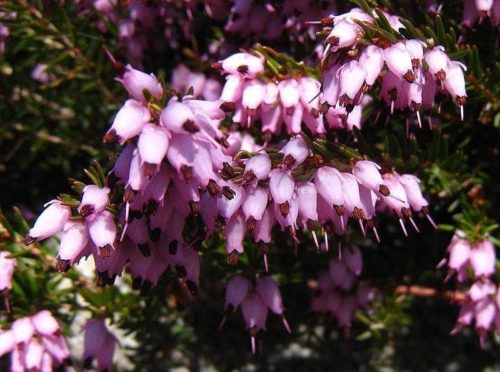
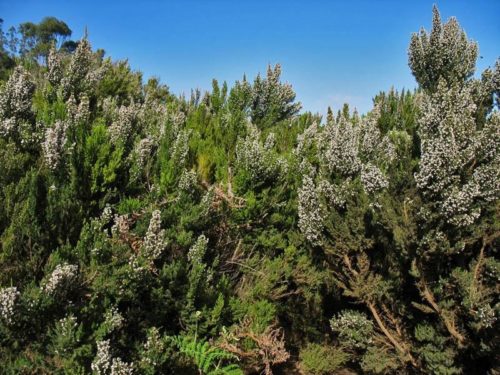
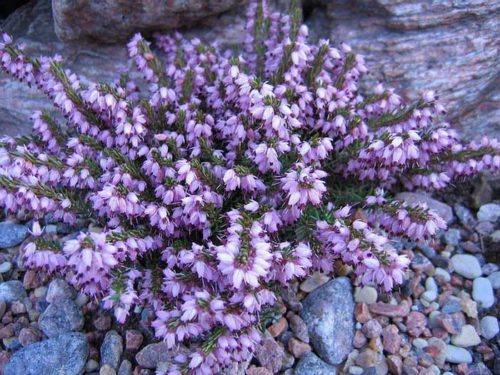
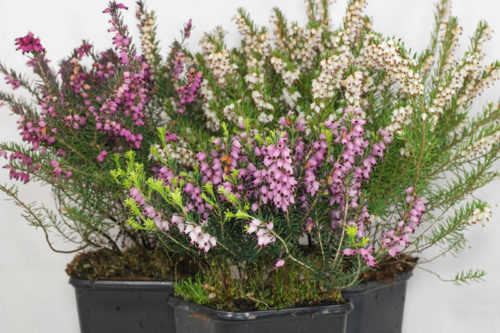
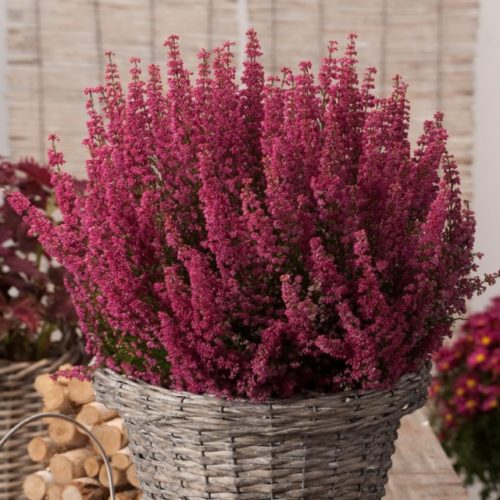
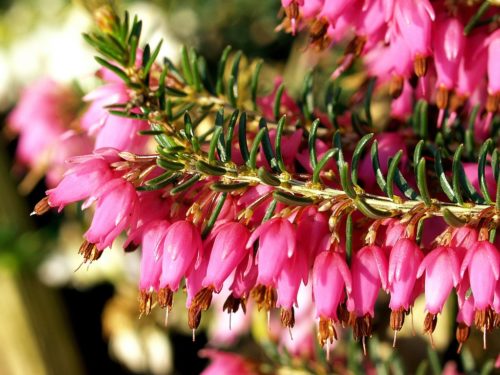
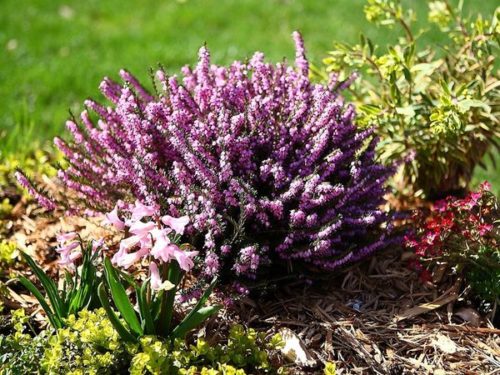
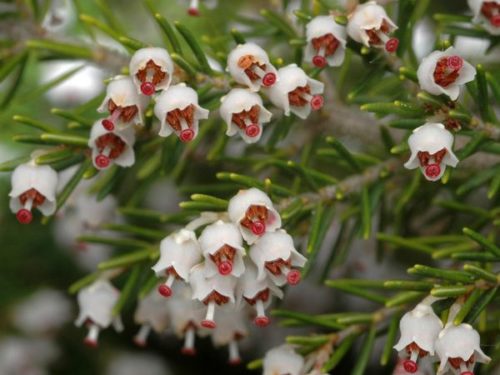
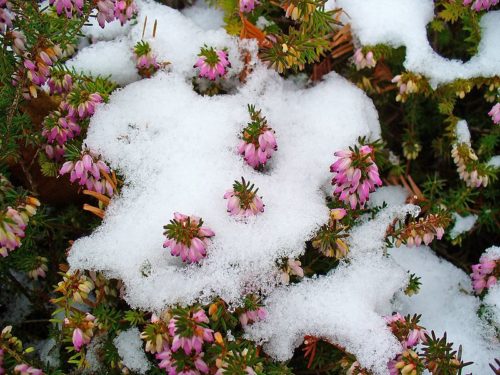
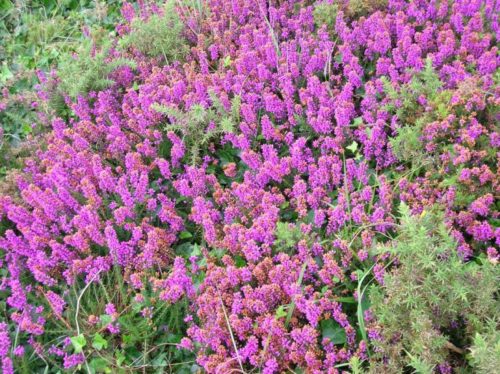
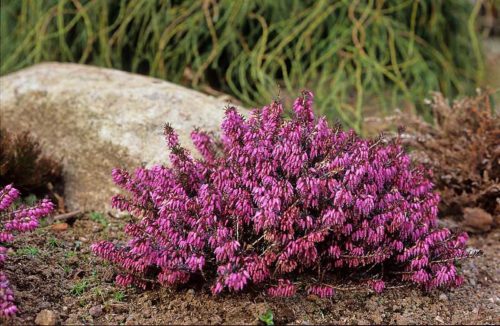












 Start a discussion ...
Start a discussion ...